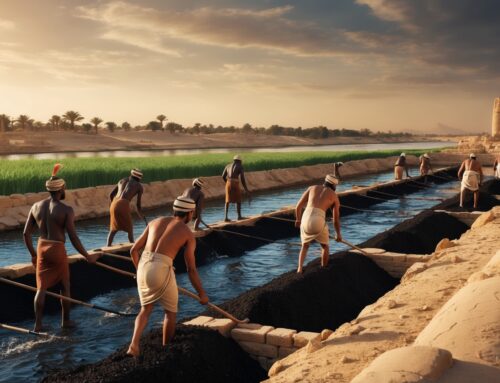Soil moisture is a key factor in crop health, but it’s not the only one. Temperature plays a huge role in how effectively your soil retains moisture and how easily plants can access it. In this post, we’ll explore why temperature matters when measuring soil moisture and how you can use this information to improve your irrigation practices.
The Temperature-Moisture Connection
Temperature affects soil moisture in several ways. Hotter temperatures cause soil to dry out more quickly, leading to increased evaporation and reduced water availability for plants. Cooler temperatures, on the other hand, can help retain moisture but may slow down plant growth. Soil temperature also impacts microbial activity, which in turn affects nutrient availability and the overall health of your plants.
When temperatures rise, microbial activity in the soil also increases, breaking down organic matter more quickly and making nutrients available for plant uptake. However, during extremely high temperatures, these microbes can become too active, potentially leading to nutrient imbalances. On the flip side, cooler temperatures slow down microbial activity, which means nutrients are released at a slower rate. This delicate balance of temperature and microbial health is essential for maintaining soil fertility and ensuring that your plants have consistent access to the nutrients they need.
To illustrate the impact of temperature on soil moisture, let’s look at the historical Dust Bowl of the 1930s. During that time, extreme heat combined with poor agricultural practices led to severe soil erosion and drought conditions. Farmers faced barren fields, and the topsoil, which was supposed to nourish crops, was swept away by the wind due to lack of moisture and vegetative cover. This tragic event serves as a powerful reminder of how temperature can drastically impact soil moisture and overall farm productivity. The combination of intense heat and dry soil created a vicious cycle that was difficult to break.
Today, with the right tools and knowledge, farmers can avoid such disastrous outcomes by understanding and managing the interplay between temperature and soil moisture. By using soil moisture and temperature sensors, like Terrestream’s Irrigauge, farmers can monitor conditions in real time and adjust their irrigation strategies accordingly. This proactive approach helps prevent soil degradation and promotes healthier crops, even during periods of extreme weather.
Temperature also affects the soil’s ability to retain moisture based on soil type. For instance, clay soils can become extremely compacted when temperatures are high, making it harder for water to infiltrate and leading to surface runoff. On the other hand, sandy soils may become too loose, allowing water to drain too quickly without giving plants a chance to absorb it. Understanding how different soil types react to temperature changes can help farmers implement targeted irrigation practices that take these variations into account.
Additionally, temperature influences the growth rate of plant roots. In warmer soils, roots grow more quickly, which can be beneficial during early plant development. However, if the soil becomes too warm, root growth can be stunted, leading to poor plant health. Cooler temperatures can slow root growth, but they also help plants establish a stronger root system before the onset of hot weather. This balance is key to ensuring plants can withstand temperature fluctuations throughout the growing season.
Do: Measure Soil Temperature Alongside Moisture
One of the best ways to ensure that your irrigation practices are effective is to measure both soil moisture and soil temperature. Terrestream’s Irrigauge sensors provide a complete picture of what’s happening beneath the surface by monitoring both factors. When you know the temperature of your soil, you can make better decisions about when and how much to water.
For example, if soil temperatures are high, plants may be under more stress and require additional moisture. On the other hand, during cooler periods, watering may need to be adjusted to avoid oversaturating the soil. Measuring temperature alongside moisture gives you a clearer understanding of your crop’s needs, allowing you to fine-tune your irrigation practices for optimal results.
Don’t: Ignore the Impact of Hot Days
On hot summer days, it can be tempting to water frequently to keep soil from drying out. However, watering too much during high temperatures can cause problems like root rot, nutrient leaching, and increased pest activity. When the soil is consistently wet, it can create the perfect environment for pests and diseases to thrive, leading to further issues that can harm your crops. Instead, consider timing your irrigation for the early morning or late evening when temperatures are cooler, and the water is less likely to evaporate before it can be absorbed.
Watering during cooler parts of the day not only minimizes evaporation but also allows water to penetrate deeper into the soil, reaching the root zone more effectively. This helps reduce the need for frequent watering, ultimately conserving water and promoting healthier root systems. During peak heat, watering can lead to water loss through evaporation before it even reaches the plant roots, effectively wasting both water and energy.
Historical research has shown that irrigation during the early morning can improve water efficiency by reducing evaporation losses. A study conducted by the University of California in the 1970s found that early morning irrigation improved water use efficiency in vegetable crops by as much as 20% compared to midday watering. More recent studies have also shown that morning irrigation can help reduce plant stress, especially during heatwaves, by providing moisture at a time when it can be most effectively used by the plants. These principles still hold true today, making it crucial to consider temperature when planning irrigation. By being strategic about irrigation timing, farmers can ensure that their crops get the water they need without wasting precious resources.
Do: Adjust Irrigation for Soil Temperature Variations
Different soil temperatures require different irrigation strategies. When soil temperatures are warm, water evaporates faster, and plants may need more frequent irrigation. But in cooler temperatures, the soil holds onto moisture longer, and overwatering can become a risk.
The Terrestream Irrigauge helps you monitor temperature fluctuations so you can adjust your irrigation schedule accordingly. For example, during springtime when temperatures can fluctuate wildly, knowing both moisture and temperature data can help you avoid overwatering on cooler days or under-watering on unexpectedly hot ones. Adjusting irrigation to account for these temperature variations ensures that plants get the right amount of water at the right time.
Don’t: Forget the Role of Soil Type in Temperature
Different soils respond to temperature differently. Sandy soils, for example, heat up and cool down more quickly than clay soils, which can retain heat for longer periods. This means that your irrigation practices need to account not only for the temperature but also for the type of soil you’re working with.
Clay soils, with their ability to hold water for longer, can be at greater risk of waterlogging if they are overwatered during cooler temperatures. Sandy soils, however, may require more frequent watering during hot periods as they drain more quickly. Understanding the relationship between soil type and temperature is key to optimizing your irrigation strategy.
Historical Reference: The Role of Temperature in Agricultural Practices
The importance of temperature in soil moisture management isn’t new. Historical records from ancient Mesopotamia show that early farmers carefully managed irrigation based on seasonal temperatures and soil conditions. They built elaborate irrigation systems to maximize water efficiency, recognizing that both soil and weather conditions played significant roles in crop success. These ancient practices laid the foundation for modern irrigation, and today’s technology allows us to take these concepts even further.
By using tools like the Irrigauge to monitor both moisture and temperature, farmers can take a page out of the Mesopotamian playbook—only now, we have the added benefit of real-time data and advanced predictive capabilities to guide us.
A Modern Solution for an Age-Old Problem
The relationship between soil temperature and moisture is complex, but modern technology makes it easier than ever to manage. Terrestream’s Irrigauge sensors take the guesswork out of irrigation by providing accurate, real-time readings of both soil moisture and temperature. This means you can make informed decisions that keep your crops healthy, your water use efficient, and your farm productive.
Conclusion: Temperature is More Than Just a Number
Temperature plays a critical role in determining soil moisture levels and the effectiveness of your irrigation practices. By measuring soil temperature alongside moisture, adjusting your irrigation schedule accordingly, and accounting for the type of soil you’re working with, you can ensure that your crops get exactly what they need to thrive.
The lessons from history—whether from the Dust Bowl or ancient Mesopotamia—remind us of the importance of managing soil and water carefully. Today, tools like the Irrigauge make it possible to take control of soil temperature and moisture in ways our ancestors could only dream of. Ready to see how Terrestream can help you optimize your irrigation? Check out the Irrigauge, FieldLink, and FieldHub to bring precision and efficiency to your farm.





